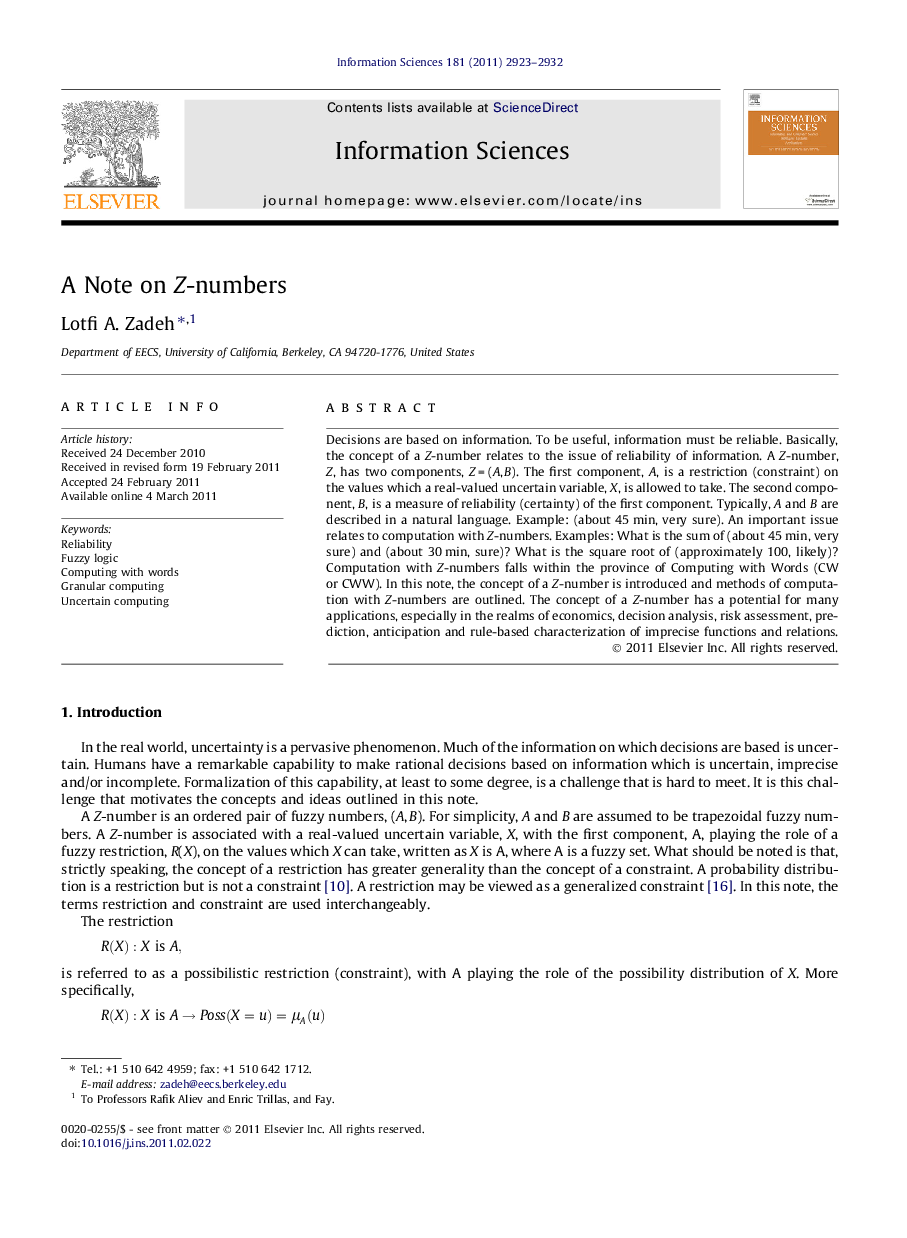| Article ID | Journal | Published Year | Pages | File Type |
|---|---|---|---|---|
| 395528 | Information Sciences | 2011 | 10 Pages |
Decisions are based on information. To be useful, information must be reliable. Basically, the concept of a Z-number relates to the issue of reliability of information. A Z-number, Z, has two components, Z = (A, B). The first component, A, is a restriction (constraint) on the values which a real-valued uncertain variable, X, is allowed to take. The second component, B, is a measure of reliability (certainty) of the first component. Typically, A and B are described in a natural language. Example: (about 45 min, very sure). An important issue relates to computation with Z-numbers. Examples: What is the sum of (about 45 min, very sure) and (about 30 min, sure)? What is the square root of (approximately 100, likely)? Computation with Z-numbers falls within the province of Computing with Words (CW or CWW). In this note, the concept of a Z-number is introduced and methods of computation with Z-numbers are outlined. The concept of a Z-number has a potential for many applications, especially in the realms of economics, decision analysis, risk assessment, prediction, anticipation and rule-based characterization of imprecise functions and relations.
